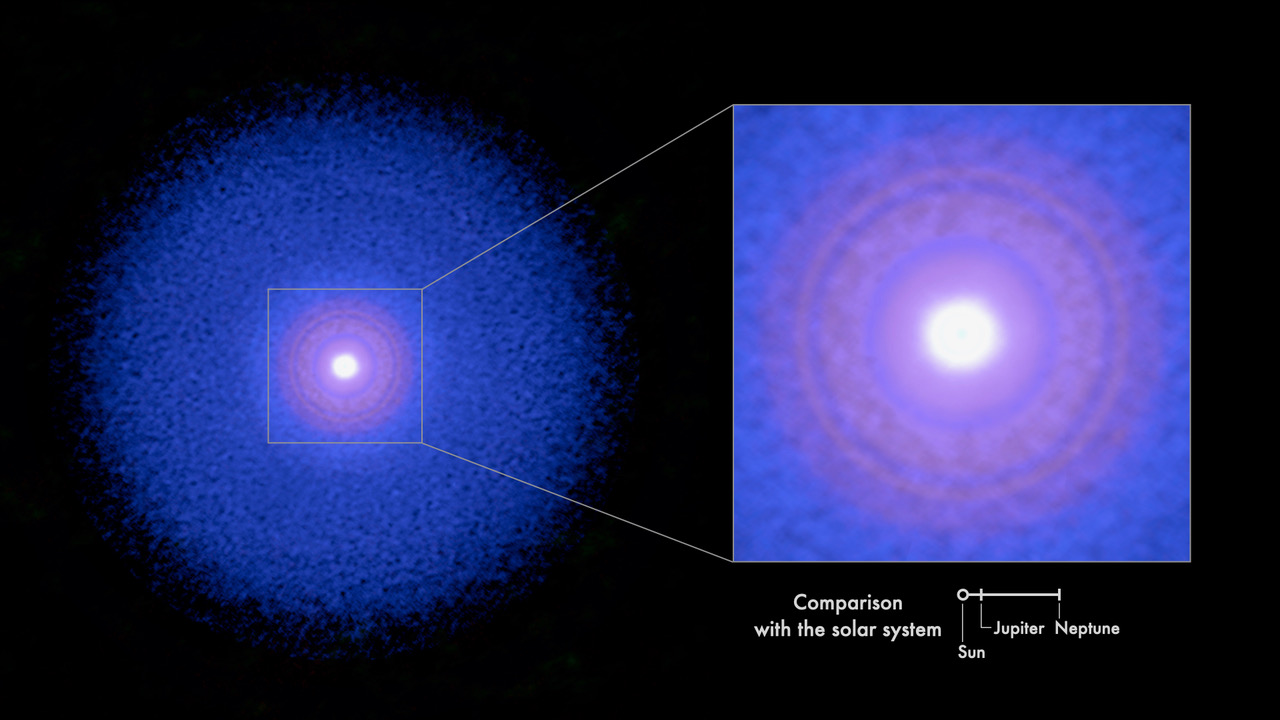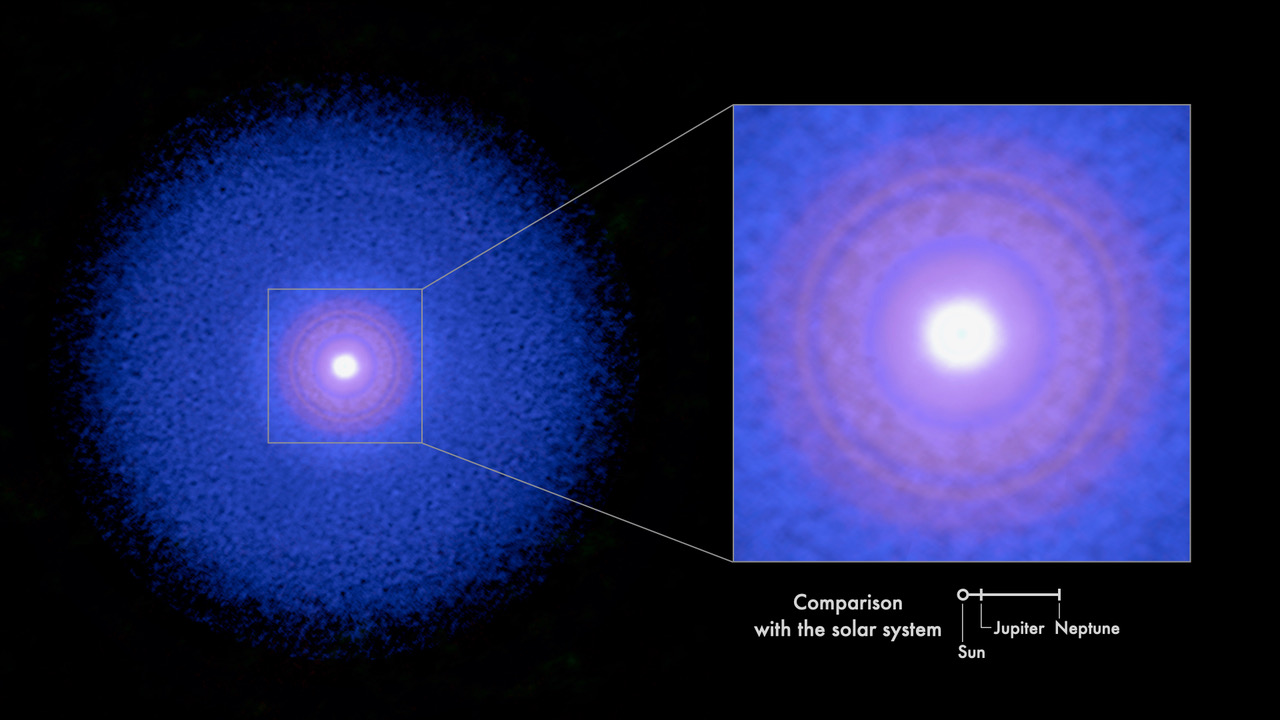New Method to Weigh Protoplanetary Disks
Astronomers have found a way to directly measure the amount of gas in protoplanetary disks without making assumptions about the relative amounts of different types of gas, making this method more accurate and robust than previous methods.
Planets form in protoplanetary disks of gas and dust around young stars. Scientists study protoplanetary disks by looking at their spectra, the wavelengths of radio waves emitted by disk components. Hydrogen gas is the main constituent of protoplanetary disks, but it isn’t easy to measure directly because it doesn’t emit radio waves efficiently. Carbon monoxide is often used as a proxy. Still, the hydrogen-to-carbon monoxide ratio can differ depending on the environment, leading to significant uncertainties in total mass estimates.
A team led by Tomohiro Yoshida, a graduate student at the Graduate University for Advanced Studies in Japan, searched the Atacama Large Millimeter/submillimeter Array (ALMA) archival data for observations of the nearest protoplanetary disk around the star TW Hydrae. From this, they produced a radio image 15 times more sensitive than previous studies, allowing them to examine the wavelengths of the spectral lines and their shapes.
From the shape of the carbon monoxide lines, the team could measure the gas pressure near the disk’s center. This pressure reveals the total mass of gas near the center without making assumptions about the hydrogen-to-carbon monoxide ratio. The team found that despite being near the end of the planet formation process, there is still enough gas in the inner region of the TW Hydrae system to make a Jupiter-sized planet.
Yoshida, the lead author of this study, says, “We would like to apply this novel technique to other disks and investigate the amount of gas in planet-forming disks with various characteristics and at various ages to clarify the gas dissipation process and the formation process of planetary systems.”
Additional Information
These results appeared in Yoshida et al. “Discovery of Line Pressure Broadening and Direct Constraint on Gas Surface Density in a Protoplanetary Disk” in The Astrophysical Journal Letters on September 22, 2022.
The Atacama Large Millimeter/submillimeter Array (ALMA), an international astronomy facility, is a partnership of the European Organisation for Astronomical Research in the Southern Hemisphere (ESO), the U.S. National Science Foundation (NSF) and the National Institutes of Natural Sciences (NINS) of Japan in cooperation with the Republic of Chile. ALMA is funded by ESO on behalf of its Member States, by NSF in cooperation with the National Research Council of Canada (NRC) and the National Science and Technology Council (NSTC) in Taiwan and by NINS in cooperation with the Academia Sinica (AS) in Taiwan and the Korea Astronomy and Space Science Institute (KASI).
ALMA construction and operations are led by ESO on behalf of its Member States; by the National Radio Astronomy Observatory (NRAO), managed by Associated Universities, Inc. (AUI), on behalf of North America; and by the National Astronomical Observatory of Japan (NAOJ) on behalf of East Asia. The Joint ALMA Observatory (JAO) provides the unified leadership and management of the construction, commissioning and operation of ALMA.
Image


